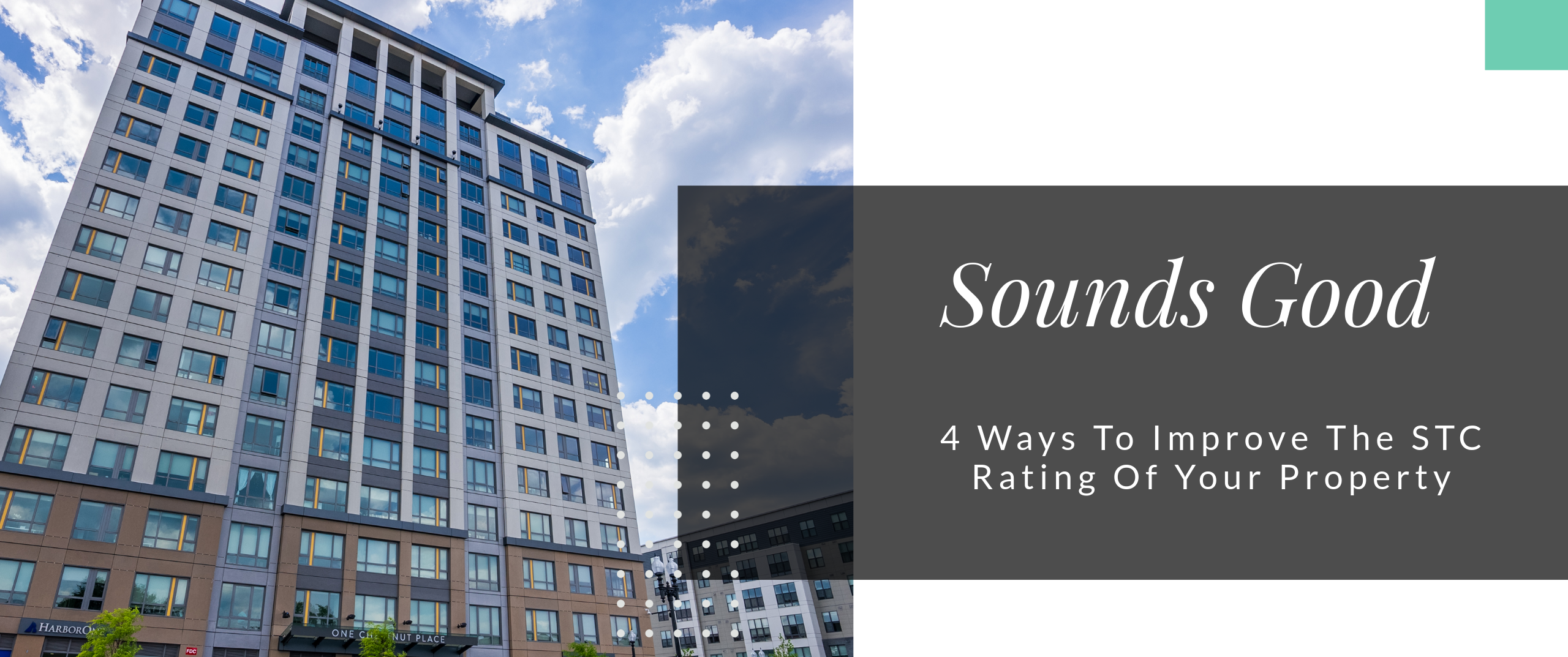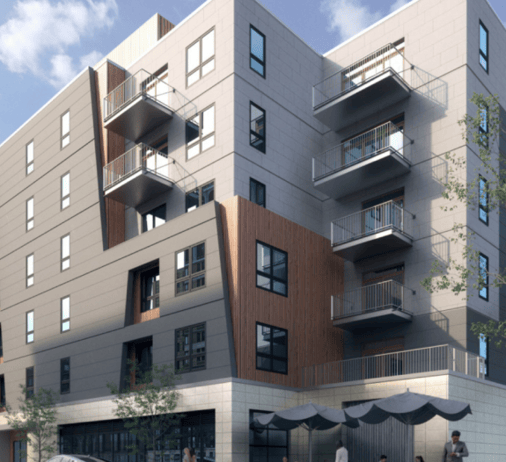Sound Attenuation in New Construction: How To Be Best-In-Class
One of the most important factors to consider when building a new construction residence is sound attenuation, or how well the building mitigates sound traveling through walls, floors, and ceilings.
For developers, it’s an obvious priority with simple solutions that not only make drastic improvements for residents but also help the building sell. For would-be home buyers, understanding what affects sound attenuation and how to gauge how soundproof your prospective new home will be is key.
Here’s a closer look at what both buyers and builders need to know.
How is Sound Attenuation Measured?
When measuring sound attenuation in a residential building, you’re essentially asking “how soundproof is my condo?” and the answer lies in STC.
STC, or sound transmission class, is the rating scale used to measure how well a building’s walls attenuate, or dampen, sound. It also roughly reflects the decibel reduction of noise that a sound barrier – or several methods of attenuation combined – can provide.
STC scores typically run from 25 to 75, where the minimum requirement to meet construction code is typically 50, and recommended measurements are 55 and above.
What Factors Affect Sound Attenuation?
A few key factors have a major impact on sound transference in a building, with the main factor being structure.
For both buyers and developers, it’s important to know that a wood-frame structure simply allows more sound than steel-and-concrete structures. And while sound attenuation isn’t going to be the deciding factor in how a building’s structure is built, it’s important to keep in mind as construction moves along.
For discerning buyers looking for the gold standard in sound attenuation, it can be tough to know what questions to ask during your tour. You already know that you should ask about the building structure, but what else should you be looking for? And as a developer, what steps can you take to ensure you have built a best-in-class property?
Other Important Soundproofing Factors Beyond Structure
In addition to the materials the building is constructed with, there are four other components that have a drastic impact on a building's STC. With the following four measures taken, building developers can easily achieve a stellar STC rating that leaves no room for question. However, it’s common to see corners cut in this area for cost reasons, leaving the door open for scrutiny and sometimes costly litigation.
Here’s a look at each factor.
Insulation
Fairly standard, insulation can help fight both sound absorption and sound transmission, as well as sound from outside a building and sound from other levels or rooms.
Gypcrete
Gypcrete is short for gypsum concrete, which combines plaster, cement, and sand. It’s a developer’s best friend, as the properties in gypcrete help them meet both sound control and fire control ratings. One area where developers tend to cut corners, though, is in the thickness of the layer of gypcrete they pour. Typically, it’s poured up to 1” of thickness, but it’s not uncommon to see thinner layers be poured, even below half an inch of thickness, as a cost-saving measure. But given that noise is the number one complaint of tenants living in multifamily residential buildings, the cost-cutting measures generally aren’t worth the headache they cause in complaints and potential litigation later.
Acoustamats
These acoustic mats are essential to increasing your STC rating, as these high-performance rubber mats deaden your floor underlay by dampening vibrations and absorbing sound at varying rates based on the thickness of the mats.
GenieClips
GenieClips are “unibody molded rubber and galvanized steel” clips that attach drywall to walls, floors, and ceilings and that are engineered to achieve “superior acoustical performance in reducing the transmission of airborne and impact sound.”
Here’s how GenieClips work.
Why Soundproofing Your Building Matters for Developers
Cost-cutting measures may be appealing, but the money saved up front by cutting corners when soundproofing your building is rarely worth it. While many developers are eyeing a potential six-figure discount by reducing their sound attenuation efforts and simply meeting code, the reality is you're setting yourself up for unnecessary exposure to risk.
Buyers Want Soundproof Buildings
Whether in a busy urban city setting, near a major road or highway, or simply due to the potential of unintentionally noisy neighbors, untreated sound will travel in a residential building and inevitably disturb and upset its tenants.
The No. 1 question prospective tenants typically ask is about how sound travels in a building, and the No. 1 complaint residents have after moving in is about the amount of noise their neighbors (especially above them) cause.
If your residential building is wood frame, you need to have other measures (like mentioned above) in place to compete with nearby buildings and have the ability to say you have best-in-class sound attenuation. When your building is anything but best-in-class in its STC rating, there’s no way around it: it’s less desirable and less marketable. You'll have to spend more time and money on the marketing and sell out or lease-up of your property and potentially spend even more down the line with costly litigation.
Litigation Over Sound Attenuation
As developers, you’re on the hook for several years post-construction for any defects in the building, and the last thing you want is to get sued over something as easily preventable as sound transference. But before you scoff at the idea, it’s happening – more often than you think – in multifamily residences and wood-frame construction.
If a large enough number of residents complain, it becomes pretty easy to organize and likely leads to an HOA lawsuit against the developer of the building. The costs of litigation and settlement alone far outweigh that of the preventative cost of best-in-class sound attenuation measures, so the choice is clear.
What Do Buyers Need to Know about Sound Attenuation?
If you’re a buyer looking for a best-in-class residential building as your next home, there are three things you should keep in mind:
- You need to be informed about the difference between wood-frame construction versus steel-and-concrete construction. There are cost differences for starters, but as mentioned above wood-frame structures will always lend themselves to greater sound transference due to the nature of the building materials.
- When looking at different construction types, don’t hesitate to ask questions about what the projected STC rating will be.
- Remember this: no construction is perfect and going to hide all noise, but by knowing the type of framing your future residence has and the lengths to which the developer is increasing its STC rating, the better off you’ll be.
CHARLESGATE is proud to partner with developers throughout Eastern Massachusetts and Greater New England. Interested in working with us? Contact us today for more information.

